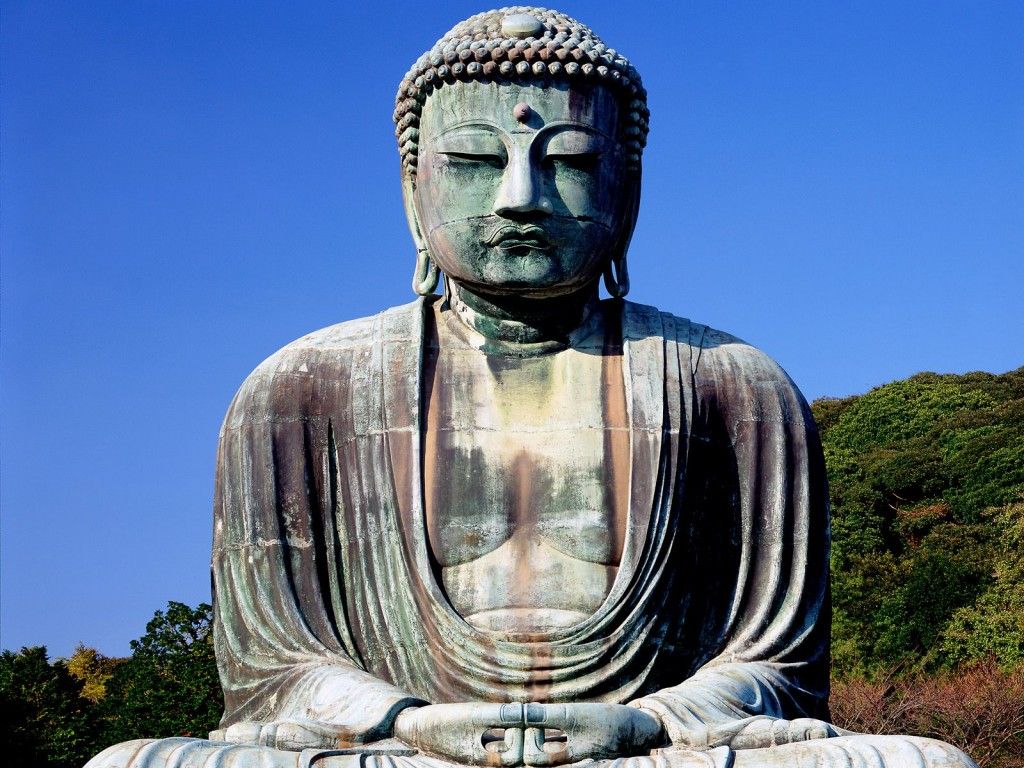Tag Archives: Buddhism
Everything Changes
Zen teacher Lewis Richmond tells the story of hearing Shunryu Suzuki sum up Buddhism in two words. Suzuki had just finished giving a talk to a group of Zen students when someone in the audience said, “You’ve been talking about Buddhism for nearly an hour, and I haven’t been able to understand a thing you said. Could you say one thing about Buddhism I can understand?
After the laughter died down, Suzuki replied calmly, “Everything changes.”
Via Phil Jackson’s Eleven Rings
What is Ahimsa?
What is Ahimsa? How Can One Practice Ahimsa?
This post is all about answering the question, “What is Ahimsa?” In a previous post, we explained that Patanjali’s Yoga Sutras specified 8 limbs of yoga with the first limb being the yamas. Within the yamas, there are 5 different principles. The principle we will focus on today is Ahimsa.
Literal Translation of Ahimsa
The literal translation of the Sanksrit word Ahimsa is nonviolence. In other words: do not harm anything.
What is Ahimsa? Practicing Ahimsa Outwardly
The principle applies to physical harm and verbal harm of all creatures (yes, even insects.) As a former college football player, when people see me practicing “catch and release” with the smallest bugs and insects, their reactions are priceless. When I explain Ahimsa as the basis of my rationale, some laugh, some become curious, some say, “you’ve got to be kidding me,” and some even get angry (which is quite ironic.)
What is Ahimsa? Practicing Ahimsa Internally
Ahimsa also teaches us to be nonviolent in thought. In fact, if you even think about punching someone in the face, it’s just as bad as doing it.
The practice of Ahimsa teaches us to be non+violent internally. Avoid beating yourself up on the inside. For example, if you’re meditating and find your mind wandering towards the past or the future, do you curse yourself and get angry for straying from your practice? Or do you practice Ahimsa and patiently guide your mind back to the present moment?
Examples of Ahimsa in Our Lives
How many times have you heard someone belittle someone else or themselves? “Oh, I’m such a idiot,” is a phrase that’s used too commonly. Ahimsa teaches us to not be so hard on ourselves.
A negative thought is a violent thought. People find it easy to speak negatively, it is the point of least resistance for them. In a previous post, we touched on how people belittle others behind their backs. The practice of Ahimsa tells us that it doesn’t have to be this way. There are attractive alternatives described in this post.
What is Ahimsa? Ahimsa During Asana
Ahimsa can also be seen as a guide in your Asana practice. Do you let your ego get in the way by getting frustrated when you can’t hold a certain arm balance? Or do you patiently accept where you’re at in your practice? Don’t push past your body’s limit, honor where your body is, avoid injury.
Perhaps you recently started practicing yoga and notice that you usually have a “good feeling” after Asana practice. If you want to carry that good feeling off of the mat, start by practicing Ahimsa.
Quotes about Ahimsa
“The yogi sees all beings in the Self and the Self in all beings and therefore opposes violence and loses all fear. The yogi is stern with himself when dealing with his own faults but gentle with the faults of others.” ~B.K.S Iyengar
“Practice of asanas without the backing of Yama and Niyama is mere acrobatics.” ~B.K.S Iyengar


